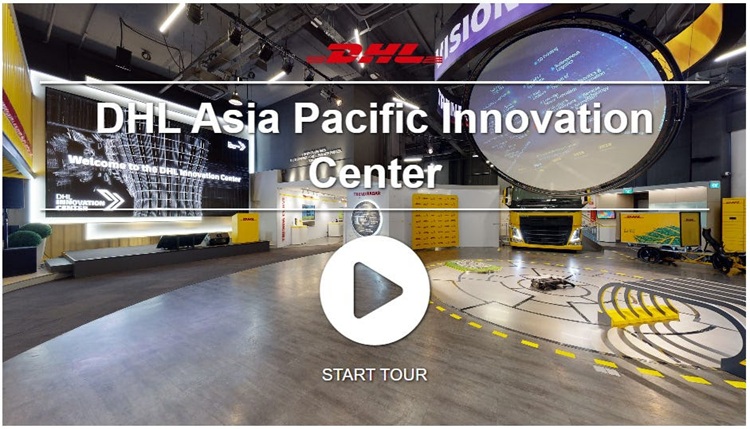Real-World Business Insights: 5 Bold Strategies to Drive B2B Growth & Foster a Client-Centric Culture
In today’s hyper-competitive B2B landscape, client-centricity isn’t just a buzzword—it’s a growth engine. But embedding it into the fabric of your organization takes more than good intentions. It requires bold strategies, real-world experimentation, and a willingness to embrace both the upsides and the trade-offs. Here are five distinctive approaches that leading companies use to put clients at the center which foster client-centric culture —along with the lessons they’ve learned along the way.
1. Co-Create the Client Journey—Don’t Just Map It
Forget static journey maps built in boardrooms. The real magic happens when clients help design the experience themselves. DHL’s Innovation Centers are a masterclass in this approach. By inviting clients into co-creation workshops, DHL has developed cutting-edge logistics solutions—from parcelcopter drones to AR-powered warehouses. These sessions aren’t just about feedback—they’re about partnership, trust, and shared innovation.
Co-creation builds loyalty and unlocks solutions you’d never find alone. Clients feel heard, valued, and invested. But it’s not without its challenges. Co-creation demands time, facilitation skill, and a tolerance for ambiguity. Not every client is ready—or equipped—to ideate at this level, and not every idea will be viable. Still, when done right, the payoff is transformative.

2. Train Every Team in Client Empathy
Client-centricity isn’t the job of sales alone. When finance, ops, and engineering understand client pain points, the entire organization becomes more responsive. Salesforce’s “Customer360” enablement program immerses cross-functional teams in real client stories. Through empathy labs and role-play exercises, even backend teams learn to “walk in the client’s shoes.” The result? Products and processes that reflect real-world needs—not internal assumptions.
The benefit is clear: empathy drives relevance. Teams become more agile, more aligned, and more attuned to what clients actually care about. But the downside is that empathy training can feel abstract or performative if not tied to real decisions. Without leadership reinforcement and follow-through, it risks becoming a one-off workshop rather than a cultural shift. The key is to embed empathy into daily rituals—not just annual events.
3. Measure What Matters to Clients
Vanity metrics like clicks and impressions don’t drive growth. Client-centric companies track what truly matters—like how fast clients see value or how well their goals are met. HubSpot, for example, ditched superficial KPIs in favor of metrics like “Time to First Value” and “Customer Success Score.” These helped pinpoint onboarding friction and improve retention—leading to stronger client relationships and higher lifetime value.
With right metrics, you get clarity on what drives real impact. These metrics align internal teams around client outcomes, not internal outputs. But the challenge lies in data complexity and cultural inertia. Shifting from traditional KPIs to client-centric ones requires retooling dashboards, retraining teams, and sometimes confronting uncomfortable truths. It’s worth it—but it’s not plug-and-play.
4. Embed Living Client Personas in Every Decision
Static personas belong in dusty decks. The best companies use dynamic, data-driven personas that evolve with client behavior—and influence every strategic move. IBM’s Automatic Persona Generation (APG) system creates real-time personas based on client data. These aren’t just marketing tools—they’re embedded into product development, pricing, and campaign design. It’s empathy at scale, powered by analytics.
Living personas help teams anticipate needs, personalize experiences, and make faster, smarter decisions. But there’s a trade-off: data dependency. If your inputs are flawed or biased, your personas will be too. And over-reliance on algorithms can dilute the human nuance that clients value. The best approach blends data with dialogue—quantitative insight with qualitative empathy.
5. Turn Clients into Innovation Partners
The most client-centric companies don’t just serve clients—they innovate with them. Amazon’s Lab126 invites select clients and partners to co-develop products like Kindle and Echo. Early feedback shapes design and functionality, making clients feel like collaborators—not just consumers. This model deepens trust and accelerates market fit.
With this strategy, you reduce guesswork and build solutions clients actually want. Innovation becomes faster, more targeted, and more inclusive. But the risk is scope creep and misalignment. Not every client idea fits your strategy, and not every partnership scales. Managing expectations—and protecting core vision—is essential. Still, when clients become co-innovators, the relationship transcends transaction.
Client-centricity isn’t a department—it’s a mindset!
These five strategies show how leading B2B firms embed it across every touchpoint, metric, and decision. Each approach comes with its own rewards and realities. But together, they form a blueprint for growth that’s grounded in empathy, powered by data, and shaped by collaboration.
Whether you’re in Manufacturing & Industrial, IT, SaaS, Tech, ITES, logistics, or consulting, the path to relevance starts with one question:
“What would our clients build—if they were in our shoes?”
Do you need professional help in this area? Contact us
#nilakantasrinivasan-j #canopus-business-management-group #B2B-client-centric-growth #client-centric-culture #DHL
